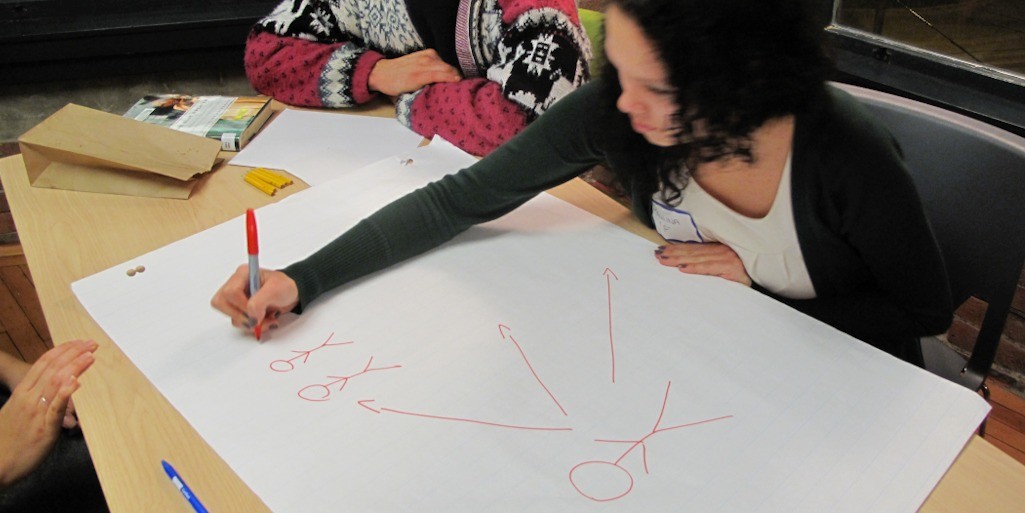Build Your Business
The Two Business Model and Value Proposition Design Tools Every Social Innovator Needs in Their Toolbox
How social innovators can use the Business Model Canvas and the Value Proposition Canvas to uncover patterns of value creation and build strong business models that work.
September 24, 2015

A common theme across all our courses is a focus on finding the best tools out there that are simple, practical, and immediately applicable. That is why we are big fans of Alex Osterwalder’s work. Alex is the lead author of the international best seller "Business Model Generation" and creator of the Business Model Canvas, a tool that’s revolutionizing how companies design, build, and manage new business models.
Last year, we hosted an hour long Pop-Up Course with Alex on how social innovators can use the Business Model Canvas and his latest tool, the Value Proposition Canvas, to uncover patterns of value creation and build strong business models that work. Next week we’re launching a new 4-week course, Social Enterprise Models, focused entirely on how to use these tools to build strong social enterprise models.
Here’s a glimpse of what we learned from Alex and the tools you can expect to play with in the course.
MASTER CRAFTSMAN HAVE A VARIETY OF TOOLS IN THEIR TOOL BELT
Alex often starts his talks off with the following analogy. “Imagine having to go through heart surgery and the surgeon walking in with just a Swiss Army knife. A pretty frightening thought!” Just as a surgeon needs a variety of tools to perform specific operations Alex believes executives and entrepreneurs need more precise tools beyond the usual SWOT analysis and business plan. This idea was the inspiration for his first book "Business Model Generation" featuring The Business Model Canvas – a one-page tool to visualize how your organization creates, delivers and captures value. "The Business Model Canvas enables teams to get out of the world of blah, blah, blah and into the world where strategic conversations are mapped to something more tangible and concrete," says Alex.
BUSINESS PLANS ARE A WASTE OF YOUR TIME
Alex tells us for a long time, going from new idea to business or organization, has been presented to us as a linear process where we write business plans. However, business plans do not work.
“When you’re just getting started with a new idea you progress, regress, and progress and regress until you figure out what works", he says. In the beginning it’s all about search, searching for how to best create value (what’s the value proposition?) and searching for the right business model to capture that value. It’s not until you’ve figured out what works are you ready to execute a plan.
ARTICULATE HOW YOU CREATE VALUE FOR CUSTOMERS
When Alex started working with companies after the launch of the first book, he saw many people struggling to describe their value propositions; therefore, he and his team developed the Value Proposition Canvas which sits at the core of his new book "Value Proposition Design". The Value Proposition Canvas helps make explicit how you’re creating value for your customers or beneficiaries.
“In the social sector we’re often heavy on mission statements but light on clear value statements."
The value proposition canvas allows you to visualize in a concrete way how a product, service, or program creates value for your customers. It zooms into two of the most important boxes of the Business Model Canvas (Customer Segments and Value Proposition) and helps connect specific product and services to customer pains and gains and provides shared language to be more explicit about how you are creating value for customers. For those of you asking, “How is this helpful if I have multiple ‘customers’ (eg. Beneficiaries, payers, donors, etc.)?” Here's what Alex suggests:
Create one value proposition for each of your stakeholders.

MAINTAIN A PROTOTYPING MINDSET
“The key to designing great value propositions and business models is not falling in love with your first ideas,” says Alex.
The focus here is to sketch out a loose set of hypotheses and immediately get out of the building and test whether the pains you think your customers or beneficiaries have are actually true. The majority of the time you’ll be wrong so you’ll need to go back to the drawing board – an iterative process Alex calls design and search. If you do this right you will be prototyping a lot of different business models and value propositions and throwing many of them out as you learn what is working. The goal is to find the right fit between not only the problem and solution but also the product, market and business model.
When we asked Alex where we should look for inspiration for innovative business models he said The Wall Street Journal, Financial Times or even The New Yorker. “Any article you read about a business model, download a copy of the Business Model Canvas and sketch it out. Study the business models of companies like SunEdison, IKEA, Nespresso, and Facebook and see what you can import into your social enterprise.”
Interested in putting these tools into action towards an idea you have? Sign up for the next Acumen Academy Social Enterprise Models course.

